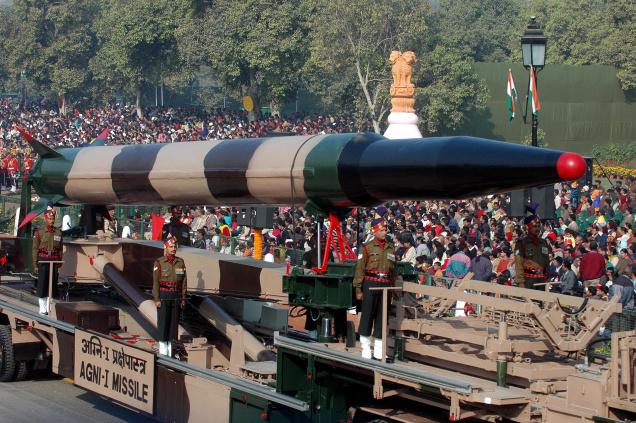Agni-I successfully test-fired
The Strategic Forces Command (SFC) of the Indian Army successfully launched on Friday the Agni-I missile from the Wheeler Island, off Odisha and the missile travelled its full range of 700 km.
Agni-I took off from a mobile launcher (a TATRA truck) at the Integrated Test Range (ITR) at 10.06 a.m. and sped towards its target in the Bay of Bengal. The missile’s re-entry systems worked well and it plunged into the targeted area with accuracy.
The Defence Research and Development Organisation designed and developed Agni-I. The Army has already deployed this short-range missile which can carry nuclear warheads.
An elated V.K. Saraswat, Scientific Advisor to the Defence Minister, told The Hindu from the Wheeler Island, that all the Agni missiles — Agni-I, II, III, IV and V, developed by the DRDO, “are flying high.” The DRDO launched Agni-V with a range of more than 5,000 km in April 2012 and the DRDO was back to launching Agni-I now.
“The production system of Agni missiles is working on schedule and the user [the Army] is conversant with the exercise of the launch. They have done a superb job today. The Strategic Forces Command has mastered the technology of launching the missile to a high degree,” said Dr. Saraswat. The missile was drawn from the production lot.
G. Satheesh Reddy, Associate Director, Research Centre, Imarat (RCI), one of the DRDO laboratories situated in Hyderabad, described the launch as “a complete success.” Cameras on board two ships stationed near the targeted area recorded the terminal event of the missile’s flight.
Avinash Chander, Chief Controller (missiles and strategic systems), DRDO, V.G. Sekaran, Director, Advanced Systems Laboratory (ASL), Hyderabad, S.K. Chaudhury, Director, RCI, J Chattopadhyaya, Project Director Agni -I, M.V.K.V. Prasad, Director, ITR, Balasore, Orissa and the top officers of the SFC witnessed the launch. The ASL, a DRDO laboratory and the RCI contributed the systems in Agni-I.
Agni-I is 15 metres long and weighs 12 tonnes. It is a single stage missile that is powered by solid propellants. It can carry a nuclear warhead weighing one tonne. With its range of 700 km, it is Pakistan-specific. The first flight of Agni-I took place on January 25, 2002. The DRDO developed it quickly within 15 months because there was a felt need for a missile with a short range which will cover the western area. Such a need was felt after the Kargil war between India and Pakistan in 1999.












